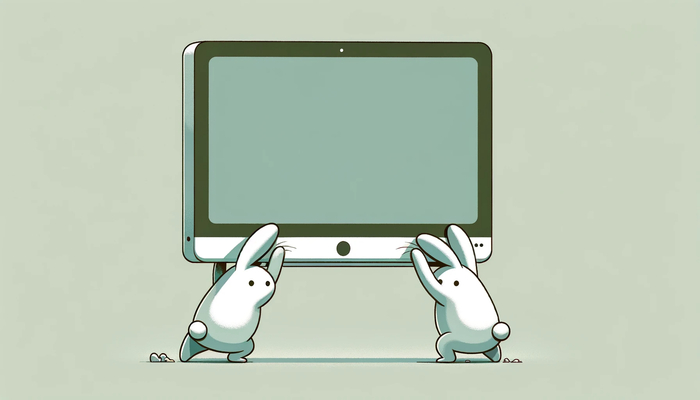
Artificial intelligence is set to transform the job landscape in the coming years. According to a new forecast from Forrester Research, while automation and AI will replace nearly 5% of jobs in the US by 2030, generative AI alone will influence over 11 million jobs by reshaping daily tasks and workflows. This suggests that although some roles may decline, emerging technologies will create abundant new opportunities, particularly in positions powered by AI.
We can actually see this already: roles that leverage the capabilities of tools like generative writing to enhance human creativity and productivity are on the rise. Generative AIs primarily affect educated, middle-income office and administrative workers, as well as writers, researchers, etc. Lower-wage manual labor jobs see less impact.
Now, let’s take a closer look at our possible professional future.
AI Developer Roles
With global AI investment of over $100 billion annually, demand for specialized AI builders is intensifying rapidly across industries.
First on the list, of course, are the jobs that revolve around the direct development and optimization of artificial intelligence systems. Roles like prompt engineers, AI trainers, machine learning engineers, or conversation designers are seeing surging demand and salaries as generative AI takes off.
- Prompt Engineers specialize in designing and refining precise text strings that optimize AI training and produce desired outcomes. They are familiar with the nuances specific to different generative AI models and play a crucial role in creating enjoyable human-AI interactions.
- AI Trainers are responsible for training and fine-tuning AI models using labeled data. They work on improving the accuracy and performance of AI systems through continuous training and data refinement.
- AI Auditors actively assess AI systems for biases, errors, and compliance with regulatory frameworks. They ensure that AI systems produce accurate and unbiased outputs, particularly in language models and other AI applications.
- Machine Managers oversee AI-operated hardware and systems. As AI extends beyond text-based interactions to controlling hardware, Machine Managers are crucial in managing and optimizing AI-operated systems.
- Computer Vision Data Labelers are responsible for labeling images, pixels, or key points in images to create training datasets for computer vision models. They categorize images, detect objects, identify key points, or segment images, providing the necessary context for AI models to learn from the labeled data.
- Speech Data Annotators are tasked with labeling speech data, which may involve transcribing spoken language, identifying speech patterns, or annotating audio recordings to provide context for speech recognition and natural language understanding models. Their work is essential for training AI models to accurately process and understand spoken language.
- Natural Language Understanding (NLP) Engineers specialize in developing and refining AI models that can comprehend and interpret human language. They work on tasks such as text annotation, entity recognition, sentiment analysis, and language modeling to enable AI systems to understand and respond to natural language input.
- AI Ethicists or Ethics Experts are responsible for guiding the ethical development and deployment of AI technologies. They analyze the ethical impact of AI-generated content, propose guidelines to address harmful outcomes, and ensure the responsible and ethical use of AI.
So, noting how critical these positions are nowadays, it’s obvious that major industry players are aggressively seeking talent to fill them — or even providing training programs for potential employees.
For example, Google has launched free and paid generative AI training courses, with a specific learning path designed for developers called “Generative AI for Developers,” which includes technical hands-on labs and courses. Additionally, Google Cloud is offering training content to help people build cloud skills, including in the areas of artificial intelligence, machine learning, and data analytics.
Microsoft is talent building as well, with open roles involving AI or machine learning across departments like Azure, Office 365, and Dynamics 365. Additionally, Microsoft has been introducing AI-powered services such as “Skills in Microsoft Viva” to help organizations understand workforce skills and gaps, indicating a strong emphasis on AI-driven talent management and development.

Jobs Using AI Tools
In addition to those who work behind the scenes, the business also needs people capable of directly applying AI tools like chatbots to transform workflows. Positions using AI assistants are appearing across domains like writing, design, customer service, and more.
The common thread across all the parts of the industry is how incorporating AI transforms what humans can accomplish.
Rather than facing replacement, writers, designers, customer service reps, and others instead have their capabilities amplified.
AI writing assistants, for example, employ language AI to streamline content creation. Leveraging tools like ChatGPT, Bing, or Claude helps authors work faster by providing them with outlines, suggestions, or even entire passages on requested topics to edit and approve. These AI assistants handle routine research and drafting, enabling human writers to focus on the high-value result of their combined efforts.
Graphic designers and digital artists get their work processes boosted by generating references, color palettes, and initial website wireframes to accelerate visual concepting. They provide rapid iterations to inspire new directions aligned to creator goals. And other assistants answer customer queries, schedule meetings, summarize key insights from data analytics, and much more — in a matter of seconds, all powered by AI, while people focus on higher reasoning, judgment, and creative thinking.
AI integration inherently changes roles’ workflows, output, and required skills. And by embracing the transformation, professionals can tap into possibilities radically expanded through adaptive collaboration.
ClickHelp AI
As AI capabilities transform existing roles across industries, innovative companies also develop advanced tools to empower these augmented knowledge workers. One such solution helping to maximize human productivity is ClickHelp’s WriteAssist, a new AI writing assistant feature.
Integrated directly within ClickHelp, the feature acts as a co-pilot for technical writers aimed to streamline content creation and editing, making it more efficient and versatile for users. It can transform text or create new content, from drafting articles to rewriting sections or refining passages to match specified tones and styles. Writers then can efficiently review, edit as needed, and approve the content.
And more than that, we’re rolling out the AnswerGenius chatbot, which allows you to embed AI assistants into your documentation. This chatbot not only provides immediate responses but also remembers the context of the conversation, enabling a continuous dialogue for a more comprehensive and engaging user experience. This upgrade is set to enhance documentation interactivity and provide real-time, contextual assistance to users.
To learn more, feel free to request a demo of a free trial.

Conclusion
Of course, some skepticism surrounds AI’s potential impact on jobs and the economy. The main argument against it is the concern that the wide deployment of generative AI would create gaps between the capabilities of machines and humans too large to cross. And then, entire industries could face disruption beyond retraining capacities.
However, expert analysis indicates AI is more likely to uplift rather than usurp human potential. According to the PwC report on Artificial Intelligence and Robotics, AI augmentation will contribute over $15 trillion to the global economy by 2030. Forrester Research also notes the use of generative AI will influence over 4X more jobs than it displaces.
Leading AI voices like Andrew Ng of DeepLearning AI also remain adamant that AI will empower but not replace people. Because current systems lack common sense, advanced reasoning, and emotional intelligence which are uniquely human traits. The symbiotic pairing of strengths between humans and AIs, though, points toward collaboration rather than competition.
Preparing workforces for AI adoption through skills programs and rethinking role design are obligatory. But framing this as a binary outcome of human vs. machine belies the demonstrated benefits both gain working in concert. With careful implementation policies, we can overcome our fears regarding detrimental impacts on careers.
Good luck with your technical writing!
ClickHelp Team
Author, host and deliver documentation across platforms and devices



